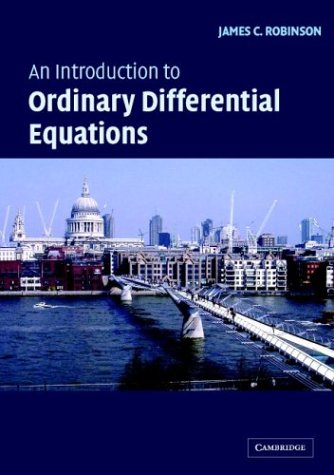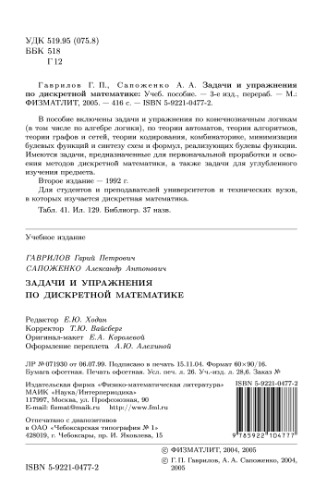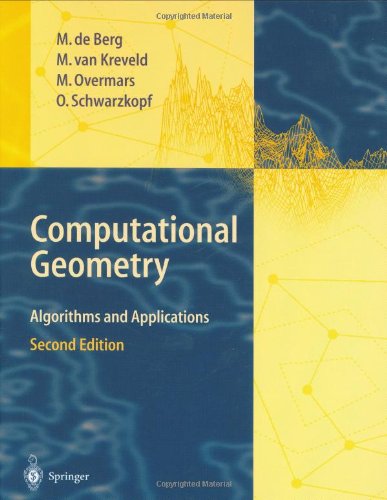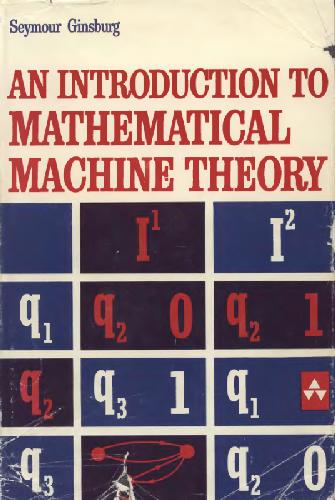James C. Robinson9780521533911, 9780521826501, 0521533910, 0521826500, 9780511165986
Table of contents :
Cover……Page 1
Half-title……Page 3
Title……Page 5
Copyright……Page 6
Dedication……Page 7
Contents……Page 9
Preface……Page 15
Introduction……Page 17
Part I First order differential equations……Page 19
1.1 Radioactive decay……Page 21
1.2 Radiocarbon dating……Page 22
Exercises……Page 24
2 Integration variables……Page 25
3.1 Ordinary and partial differential equations……Page 27
3.3 Linear and nonlinear……Page 29
3.4 Different types of solution……Page 30
Exercises……Page 32
4 Graphical representation of solutions using MATLAB……Page 34
Exercises……Page 37
5.1 The Fundamental Theorem of Calculus……Page 38
5.2 General solutions and initial conditions……Page 41
5.3 Velocity, acceleration and Newton’s second law of motion……Page 45
5.4 An equation that we cannot solve explicitly……Page 48
Exercises……Page 49
6.1 The case for an abstract result……Page 54
6.2 The existence and uniqueness theorem……Page 56
6.3 Maximal interval of existence……Page 57
6.4 The Clay Mathematics Institute’s $1 000 000 question……Page 58
Exercises……Page 60
7.1 The qualitative approach……Page 62
7.2 Stability, instability and bifurcation……Page 64
7.3 Analytic conditions for stability and instability……Page 65
7.5 Some examples……Page 66
7.5.1 A population model……Page 67
7.5.2 Terminal velocity……Page 68
7.5.3 What have we lost?……Page 69
7.6 The pitchfork bifurcation……Page 70
Exercises……Page 72
8.1 The solution ‘recipe’……Page 75
8.2 The linear equation………Page 77
8.3 Malthus’ population model……Page 78
8.4 Justifying the method……Page 80
8.5 A more realistic population model……Page 82
8.6.1 Partial fractions again……Page 84
8.6.2 Two competing species……Page 87
Exercises……Page 88
9.1 Constant coefficients……Page 91
9.2 Integrating factors……Page 92
9.3 Examples……Page 94
9.4 Newton’s law of cooling……Page 95
9.4.1 Estimating the time of death……Page 96
9.4.2 The temperature in an unheated building……Page 97
9.4.3 Combining two oscillating terms……Page 99
9.4.4 Back to our example……Page 101
Exercises……Page 102
10.1 Exact equations……Page 105
10.1.1 Integrating factors……Page 107
10.2.1 Homogeneous equations……Page 110
10.2.2 Bernoulli equations……Page 112
Exercises……Page 113
Part II Second order linear equations with constant coefficients……Page 115
11.1 Existence and uniqueness……Page 117
11.2 Linearity……Page 118
11.3.1 Linear independence of functions……Page 120
11.3.2 Two linearly independent solutions are necessary and sufficient……Page 121
11.4 The Wronskian……Page 122
11.5 Linear algebra……Page 123
Exercises……Page 125
12 Homogeneous second order linear equations with constant coefficients……Page 127
12.1 Two distinct real roots……Page 128
12.2 A repeated real root……Page 129
12.3 No real roots……Page 131
Exercises……Page 134
13.1 The spring……Page 136
13.2 The simple pendulum……Page 138
13.3 Damped oscillations……Page 139
Under-damping……Page 141
Exercises……Page 142
14.1 Complementary function and particular integral……Page 147
14.2 When f(t) is a polynomial……Page 149
14.3 When f(t) is an exponential……Page 151
14.4 When f(t) is a sine or cosine……Page 153
14.6 More complicated functions f(t)……Page 155
Exercises……Page 156
15.1 Periodic forcing……Page 157
15.1.2 ‘Ideal’ resonance: unbounded response……Page 159
15.2 Pseudo resonance in physical systems……Page 161
Exercises……Page 164
16.1 Complementary function and particular integral……Page 166
16.2 The general theory for nth order equations……Page 168
Exercises……Page 169
Part III Linear second order equations with variable coefficients……Page 173
17 Reduction of order……Page 175
Exercises……Page 178
18 The variation of constants formula……Page 180
Exercises……Page 184
19 Cauchy–Euler equations……Page 186
19.2 A repeated root……Page 187
19.3 Complex roots……Page 189
Exercises……Page 190
20.1 Power series……Page 192
20.2 Ordinary points……Page 194
20.3 Regular singular points……Page 199
20.4 Bessel’s equation……Page 203
Exercises……Page 211
Part IV Numerical methods and difference equations……Page 215
21.1 Euler’s method……Page 217
21.2 An example……Page 219
21.3 MATLAB implementation of Euler’s method……Page 220
21.4 Convergence of Euler’s method……Page 222
Exercises……Page 225
22.1 First order difference equations……Page 229
22.3.1 Distinct real roots……Page 231
22.3.2 Repeated roots……Page 233
22.3.3 Complex roots……Page 234
22.4.1 Right-hand side fn is a polynomial in n……Page 235
22.4.2 Right-hand side………Page 237
Exercises……Page 238
23.1 Fixed points and stability……Page 240
23.2 Cobweb diagrams……Page 241
23.3 Periodic orbits……Page 242
23.4 Euler’s method for autonomous equations……Page 243
23.4.1 An example……Page 244
Exercises……Page 246
24 The logistic map……Page 249
24.2 Periodic orbits……Page 250
24.3 The period-doubling cascade……Page 253
24.4 The bifurcation diagram and more periodic orbits……Page 254
24.5 Chaos……Page 256
24.6 Analysis of………Page 258
Exercises……Page 261
Part V Coupled linear equations……Page 263
25 Vector first order equations and higher order equations……Page 265
25.1 Existence and uniqueness for second order equations……Page 267
Exercises……Page 268
26 Explicit solutions of coupled linear systems……Page 269
Exercises……Page 273
27.1 Rewriting the equation in matrix form……Page 275
27.2 Eigenvalues and eigenvectors……Page 276
27.3 Eigenvalues and eigenvectors with MATLAB……Page 282
Exercises……Page 283
28 Distinct real eigenvalues……Page 285
28.1 The explicit solution……Page 286
28.2 Changing coordinates……Page 287
28.3 Phase diagrams for uncoupled equations……Page 292
28.4 Phase diagrams for coupled equations……Page 295
28.5 Stable and unstable manifolds……Page 297
Exercises……Page 298
29.1 The explicit solution……Page 301
29.2 Changing coordinates and the phase portrait……Page 303
29.3 The phase portrait for the original equation……Page 307
Exercises……Page 308
30.2 A is not a multiple of the identity: improper nodes……Page 311
Exercises……Page 315
31.1 Jordan canonical form……Page 317
31.1.1 Representation of vectors in different coordinate systems……Page 318
31.1.2 Linear transformations of the plane and 2 × 2 matrices……Page 319
31.1.3 Similar matrices and the Jordan canonical form……Page 320
Exercises……Page 321
Part VI Coupled nonlinear equations……Page 323
32.1 Some comments on phase portraits……Page 325
32.2 Competition of species……Page 326
32.3 Direction fields……Page 327
32.4.2 Step 2: linearise near the stationary points……Page 330
32.4.3 The Hartman–Grobman Theorem……Page 332
32.4.4 Step 3: find the stability type of each stationary point……Page 334
32.4.5 Step 4: ‘join the dots’……Page 336
Exercises……Page 338
33.1.1 Weak competition……Page 339
33.1.2 Coexistence……Page 343
33.2 Predator-prey models I……Page 347
33.3 Predator-prey models II……Page 350
Exercises……Page 354
34.1 One-dimensional conservative systems……Page 357
34.2 A bead on a wire……Page 360
34.3 Dissipative systems……Page 363
Exercises……Page 366
35.1 The undamped pendulum……Page 368
35.2 The damped pendulum……Page 372
Exercises……Page 374
36.1 Dulac’s criterion……Page 376
36.2 The Poincaré–Bendixson Theorem……Page 377
Exercises……Page 378
37 The Lorenz equations……Page 380
38.1 Partial differential equations and boundary value problems……Page 389
38.2 Dynamical systems and chaos……Page 390
Exercises……Page 391
Complex numbers……Page 395
Basic matrix algebra……Page 398
Solution of simultaneous equations……Page 399
The special case of symmetric matrices……Page 400
Definition and properties of the derivative……Page 403
Power series……Page 404
Turning points……Page 405
Taylor expansions……Page 406
Critical points……Page 407
Index……Page 411







Reviews
There are no reviews yet.